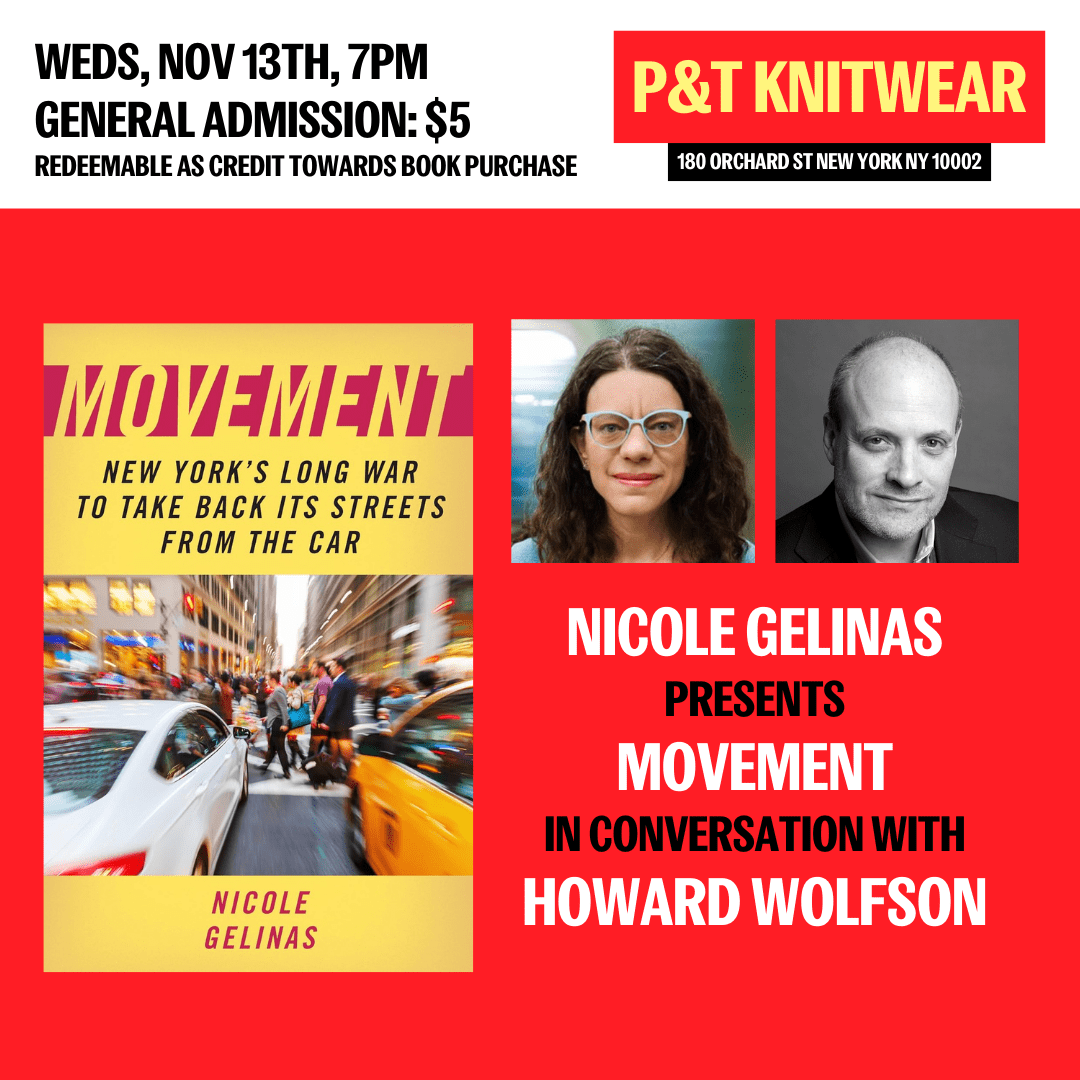
In the century since the first Model T Ford was available for sale, almost all cities across the United States have gone to enormous lengths to make their streets adaptable for cars. New York City is the one great exception — it remains the only major city in the U.S. without an interstate highway running through its core.
But, as anyone who has tried to cross a street or drive in New York knows, cars still pose a major problem in New York, one that urban planners are still trying to counteract. In her gripping new book, Movement: New York’s Long War to Take Back Its Streets from the Car (Fordham University Press, Nov. 5, 2024), author Nicole Gelinas, a well-respected urban writer who has focused on New York’s transportation system for more than a decade, masterfully traces the history of the existence of cars in New York City and explains how the automobile has failed the city and how mass transit and a revitalized streetscape are vital to its post-pandemic recovery.
Gelinas will be speaking about the book at the following upcoming events:
- Nov. 13, 7 p.m.
P&T Knitwear (This event will be held in conjunction with University Press Week)
180 Orchard St., New York, NY 10002
Gelinas will be in conversation with Howard Wolfson
- Nov. 19, 6 p.m.
Empire State Editions author panel
Fordham University Lincoln Center Campus, Leon Lowenstein Center, 12th Floor Lounge
Featuring: Nicole Gelinas, Jonathan Butler, Alice Sparberg Alexiou, and Jennifer Baum
Register here
- Jan. 21, 6 p.m.
The Skyscraper Museum
39 Battery Place
New York, NY 10280
In the book, Gelinas explains that one of the key moments in the battle against cars came in
1969, when urbanist Jane Jacobs defeated master builder Robert Moses’s plan to construct the
Lower Manhattan Expressway, a ten-lane elevated expressway would have sliced across SoHo
and Little Italy, demolishing historic buildings, and displacing thousands of families and
businesses.
Gelina also chronicles the earlier, less-known battles that preceded the cancellation of the
Lower Manhattan Expressway, including ones that fought to save street trolleys, protect
Washington Square Park, and more, and she readers introduces to a cast of other transportation heroes, including Shirley Hayes, Hazel Henderson, Richard Ravitch, and Nilka
Martell.
“You will never look at a city street in the same way again after reading Nicole Gelinas’ magisterial and gripping history of the rise, and maybe decline, of urban car culture. Gelinas persuasively [shows] how a cacophonous crowd of politicians, business elites, labor, newspapers and others pulled New York City into a chokehold of cars. She also offers hope in her nuanced and captivating account of how a new mix of public servants, civic leaders, community groups and determined New Yorkers have started on a path where car-clogged streets may well yield to pedestrians and mass transit, the bedrock of the thriving city.” — Elizabeth Glaser, founder of Vital City
The book tackles the 1970s environmental movement, the 1980s rebuilding of the subways,
and more contemporary battles, from Mayor Bloomberg’s push for more pedestrian plazas and
bike lanes in the early 2000s, to transportation advocates’ protests to prevent traffic deaths in
the Mayor de Blasio era of the 2010s, to how New York’s stewardship of its streets and subways
have played a critical role during the 2020 pandemic and subsequent recovery.
Ultimately, Gelinas shows that since the 1970s, New York’s re-embracement of its mass-transit
system and push to have a livable streetscape not only saved the city, but also redefined what it means to be a global metropolis: Not a place that is easy to drive through, but a place where
people can take transit, walk, and bike to work, to school, or just for fun.
Gelinas is a regular columnist for the New York Post, a regularly quoted source for the New York
Times and the Wall Street Journal, and a contributing editor to the Manhattan Institute’s City
Journal. She has covered New York’s transportation issues for over a decade and is the author
of the 2009 book on the global financial crisis, After the Fall: Saving Capitalism from Wall
Street—and Washington.
Movement tells the story of New York through the mastery of its streets. Mayor by mayor, year by year and sometimes street by street, Gelinas assembles the historical facts, the political forces, the powerful personalities and the street fights that have transformed and continue to shape America’s greatest city.
— Janette Sadik-Khan, former Commissioner, NYC Dept. of Transportation
